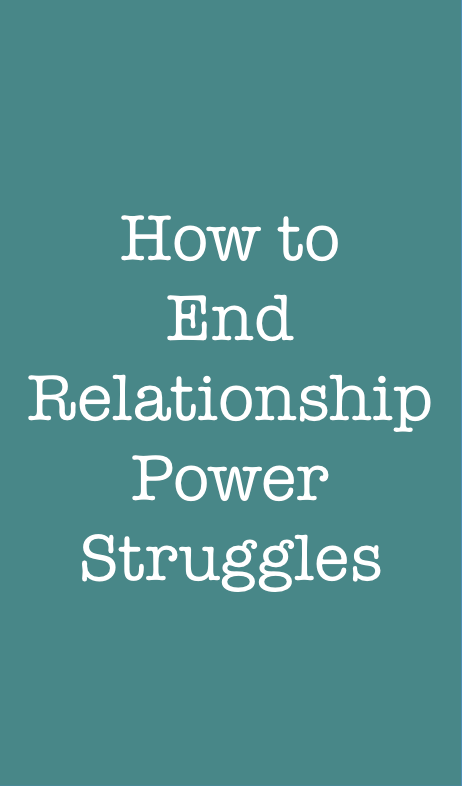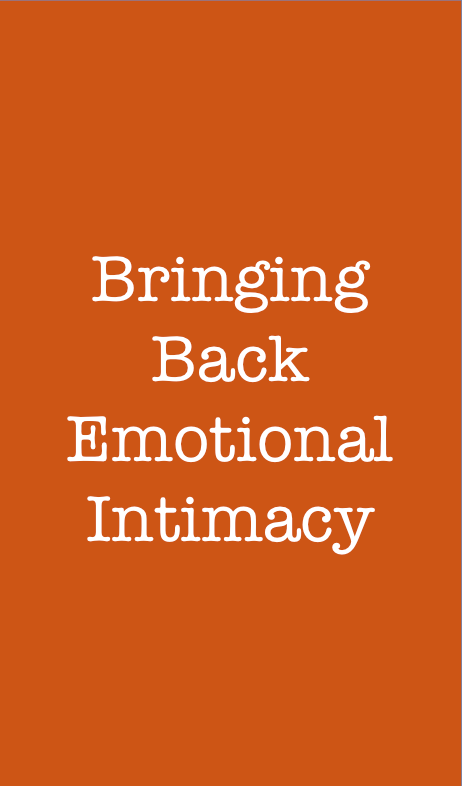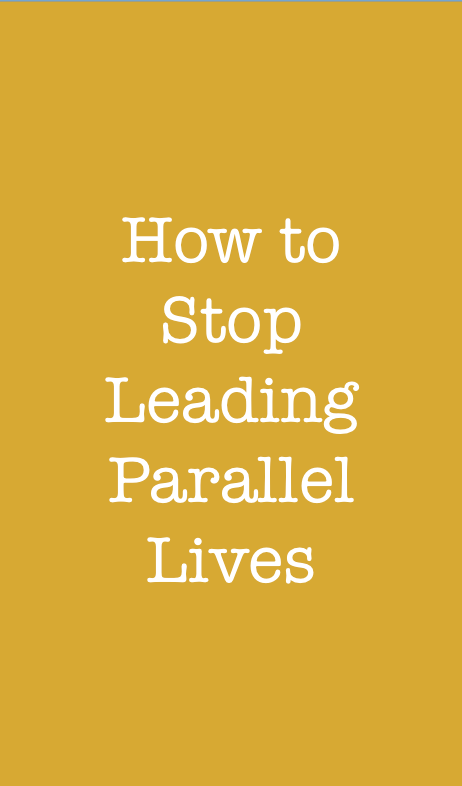Fran and Tony (the couple described in Bringing Back Emotional Intimacy) had, like a lot of couples, difficulty in a few major topics, which always caused the same stressful conversations to occur. They had grown frustrated in their own attempts to change these predictable tensions from arising, and they needed support.
I began to teach them simple, effective communication model that is based on three specific skills – self-awareness, self-inquiry and self-disclosure. Fran and Tony began to use them in their work with me.
“Okay,” Tony said. “Let’s take on one of our topics, such as emotional distance. I want more connection, just like Fran, but it doesn’t happen. I tend to pursue her, but she rejects me. That is a pattern.”
I explained how many couples get stuck in pursuer-avoider habits and how we could break them. “Okay,” I said. “You see yourself as moving towards Fran…”
“Well, of course I get frustrated and stop,” Tony said.
“Yeah, you sure do. I don’t see you for a week.” Fran was getting agitated.
“Okay, let’s start applying the basic skills,” I said. (Of course I have to summarize several conversations to give these examples.)
“Tony, you are aware that there is a pattern, and Fran agrees.” They both nodded their heads. “So that’s self-awareness. Good. Some couples never become aware of the repetition and predictability of their conflicts. Okay, so Tony, let’s move on to self-inquiry. What actually happens to you when you move towards Fran?”
Tony shifts a little on his chair. “Well, I want to connect with her. I guess you would call that my intention, in your model. Emotionally, I miss her, and maybe I feel a little vulnerable. I’m moving towards her, if you know what I mean putting myself out.”
“Sure.” Fran seems a little less agitated while Tony is talking.
“And maybe I’m already angry. Why do I have to do this all the time? Of course I am lonely. That’s why we are here.”
Self-inquiry and self-disclosure are two tools that are tied together, as you can see. Tony is exploring his inner world, and revealing it to Fran.
“Now Tony, which of these feelings, lonely, angry, vulnerable, loss of connection, which one do you think you are communicating to Fran?”
Tony was quiet a while. “I see what you are saying. She probably hears the anger, but not the loneliness.” Now Fran was leaning towards him. Self-disclosure creates connection, in a way that pursuing and withdrawing cannot.
“Can you tell her about the softer feelings?”
Tony started to talk, and there was a catch in his voice. He swallowed a couple of times, and Fran took his hand. “I miss the love, the warmth we used to have.”
“Me too, honey,” she said. “But I can feel so much closer to you when you tell me that you miss me. I feel the anger and who wants to be available for that.”
It will take some practice, but once a couple starts to use the basic three skills of the communication model, they shift the conversation from the known sad patterns which lead to distance to new patterns of openness and acceptance.
That openness IS the balm that most relationships are looking for. The self-disclosure that requires courage and discipline leads to emotional richness and connection.
In a committed relationship, like Fran and Tony have, you can feel the exquisite joy of loving and being loved, using the communication model.
When you start to feel safe and secure, you feel generous towards your partner, you can forgive an occasional mistake of forgetfulness or unkindness.
But as you know life and love don’t move in straight lines towards transformation and growth. Sometimes your communications, which once seemed so flowing, become strained or stuck. You are surprised at the parts of your personality that start to show up.
This evolution of your feelings and your communications is natural. You have moved beyond the ‘honeymoon’ phase, into a cycle of your relationship that is more ‘real’.
You might stay with this person a long time. You can no longer hide some of your own insecurities and fears. You might wonder “Will my partner love me, if I reveal so much of myself.”
The answer is YES, in a committed relationship that is moving towards growth and healing.
I have taught the three communication skills to thousands of couples; if you regularly use them, they will transform your relationship. If you don’t, you will repeat your communication conflicts endlessly. (You know couples who have the same fights for decades!)
With Self-awareness, you can begin to observe your own behavior in a careful and disciplined way.
The next skill is Self-Inquiry. Unless you start to study yourself, your reactions, your communication habits and training, you will not be able to grow closer to your partner.
The third key skill is Self-disclosure. When you reveal to your partner your own habits and mistakes, in an honest and vulnerable way, you create a deeper emotional bond, as Tony and Fran could do. You feel less lonely and stuck, and more alive and joyful.
Couples like you can become allies in a deep healing process, that leads to more joy and connection.
That love and vitality spills out naturally into your relationship, your family and your friendships.
This is the promise the Ten Practices offer you. Learn more about how my Ten Practices can help you restore intimacy and communication in your relationship.
- Schedule a free 20 minute Get to Know you Session
- Join a live online course
- Order 'A Path to Couples' book


